India Ranks 101 on World Hunger Index and 62 on the World Poverty Index, But Adani Ranks 4th on the World’s Billionaire List; Surprisingly, All Happened in the Last 8 Years

India Ranks 101 on World Hunger Index & 62 on the world poverty index, but Adani ranks 4th in the world on the Billionaires list; surprisingly, this all happened in the last 8 years.
The Indian economy may be at its worst period in recent history, but the country’s billionaires aren’t blinking an eye.
The historically unusual pandemic has caused an unheard-of recession in India. However, on July 12, Gautam Adani, the head of the international conglomerate Adani Group and the second-richest man in India, declared his prediction that the nation may reach $15 trillion (Rs 1,112 lakh crore) economy in the following 20 years.
According to Prime Minister Narendra Modi, there hasn’t been any wrongdoing in the last eight years that would have embarrassed the nation’s citizens.
The increasing number of banking crimes, demonetisation and GST have significantly affected the people and the economy; the IT sector tumbles as it shows major layoffs, rising corruption, and the list goes on.
And Despite tall claims of India becoming a $3 trillion economy by 2019-20, made by finance minister Nirmala Sitharaman, economic inequality is rising.
According to a new Oxfam brief released on Monday, for every new billionaire formed during the pandemic—one every 30 hours—nearly a million people might be pushed into extreme poverty in 2022 at about the same rate.
Billionaires’ fortunes have not grown because they are smarter or work harder. Worker circumstances are worse, they are working longer hours for less money. For years, the super-wealthy have manipulated the system with impunity, and now they are getting rich. With the help of governments, they have accumulated a surprising amount of the world’s wealth through monopolies and privatization, destroying workers’ rights and regulations, and hiding their money in tax havens.
“India was already in horrible condition before the pandemic”
With the demonetization and GST, India lost its economic momentum and saw no positives from the decision; in fact, the economy was left in a vulnerable position.
Before the virus hit the nation, the Indian economy was already growing slowly, and in March, lockdowns began. It should be highlighted that India’s decline of 23.9% is likewise far bigger than it would have been for European or American nations.
India‘s growth has changed from being significantly positive to being significantly negatively native.
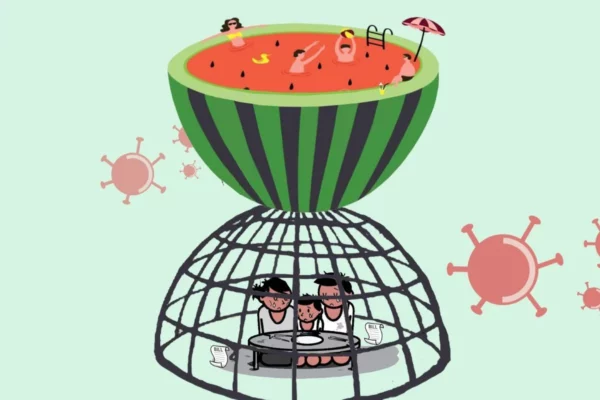
Conversely, India has dropped from 94th place in the Global Hunger Index (GHI) 2020 to 101st place in the GHI 2021, below its neighbours Pakistan, Bangladesh, and Nepal.
According to the Global Hunger Index 2020, India is in the “serious” hunger category and ranked 94 out of 107 countries. Experts attribute the low ranking to ineffective implementation procedures, a lack of effective monitoring, a siloed approach to addressing malnutrition, and subpar performance by large states.
In 2020, India was positioned 94th out of 107 countries. With 116 nations now competing, it is now ranked 101st. The GHI score for India has decreased as well, going from 38.8 in 2000 to a range of 28.8 to 27.5 between 2012 and 2021.
Undernourishment, child wasting (the percentage of children under five who are wasted or have low weight for height, reflecting acute undernutrition), child stunting (children under five who have low height for age, reflecting chronic undernutrition), and child mortality are the four indicators used to calculate the GHI score (the mortality rate of children under the age of five).
However, neighbouring nations like Nepal (76), Bangladesh (76), Myanmar (71) and Pakistan (92) have done better than India in feeding their citizens while being in the “alarming” hunger category.
India has experienced social and economic issues during the past 20 years. India’s hunger is widespread despite having one of the top ten largest economies in the world. Many people, particularly women and children, lack access to enough food throughout India. Over 194 million Indians, or 14.5% of the 1.3 billion population, are undernourished. India as a whole is grappling with a serious dilemma that is challenging to solve for a number of reasons.
According to UNICEF, India is home to one-third of the world’s malnourished children.
Internal unrest, climatic change, Covid-19, and rising inflation were already problems for the Indian economy. Millions of people have already fallen into poverty due to COVID-19, and many now struggle with hunger due to rising food prices. The conflict between Russia and Ukraine has worsened the food crisis, adding to this misery.
India recently prohibited the export of wheat. The export of basic foods, including wheat, sugar, and palm oil, has been prohibited by 13 additional nations in addition to India. These significant policy decisions have worsened the inflation and food shortage issues.
The poor and underprivileged parts of society are adversely impacted. The majority of their income is spent on food and other necessities. And now that prices are rising, they cannot even buy food for themselves, causing a serious global hunger crisis.
India Has a Serious Hunger Problem and Needs Immediate Policy Intervention
The poverty crisis in India is a significant issue that requires the highest level of policymakers’ attention.
Malnutrition rates in India are two to seven times higher than in other BRICS member countries, according to a 2015 World Bank research. The Food and Agriculture Organization (FAO) of the United Nations reported the same outcome for 2021. In addition, it should be noted that India would not be able to meet the UN-set goal of “zero hunger by 2030” at the current rate of decline.
This was the pre-COVID-19 era’s scenario. The pandemic’s onset has made the situation much more difficult. In 2020, David Beasley, the UN Food Programme’s executive director, alerted world leaders about the looming food crisis. This warning is echoed in the Global Hunger Index (GHI) report for 2021.
The GHI report was released as the globe was still getting over the effects of COVID-19. India dropped to position 101 out of 116 nations. Only Afghanistan and the least developed African nations performed better than India. It performed worse than Pakistan (76) and Bangladesh (92).
The effectiveness of policy interventions to reduce the threat of hunger and starvation is necessary for the eradication of hunger. The most difficult challenge for politicians is to rid their country of hunger and poverty.
Policy intervention
India’s hunger was one of the country’s main problems after independence. The food grain deficit is a gift from the colonial era to independent India, economic historian Tirthankar Roy remarked quite sarcastically. The average growth in crop expenditure from 1891 to 1946 was only 0.4 per cent, which increased the population generally and the proportion of the poor.
Nehru believed that by advancing agriculture, India would become developed. Due to the interconnection of agriculture, industry, and services, this sector has the ability to end hunger and increase income by speeding up economic growth. During the first and second plans, the agriculture sector received around 20% of the public sector plan’s budget.
The increase in loan flow to Rs 2,000 crore in 1975–76 from Rs 70 crore in 1950–51 demonstrates the importance of agriculture (P. Balakrishnan, 2007). The “Green Revolution,” which carried out Nehru’s vision, made India a food-secure nation.
However, whatever advancements have been made are still insufficient because 14 per cent of the population still faces food insecurity.
The COVID-19 pandemic, on the other hand, prompted the Modi administration — which has failed to present a clear economic policy on ‘food insecurity’ — to approve an additional Rs 40,000 crore to MGNREGA to combat hunger and unemployment.
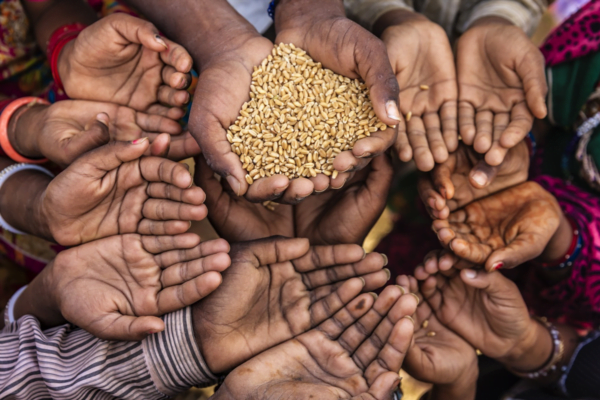
Negligence on the part of the Modi government caused India’s GHI score to stagnate. Between 2012 and 2021, the score decreased from 38.8 in 2000 to a range of 28.8-27.5.
A Disinterested Government
The Hunger Index is based on three variables. The percentage of the population that is undernourished, the percentage of children under five that are overweight, and the infant mortality rate under five.
If you give it some serious thought, hunger is something that is inherited. There is a good probability that you will be malnourished if you are born into a poor home. The main factor is undoubtedly poverty. Therefore, who is to blame for poverty?
Every decision that harms the poor, such as demonetization, contributes to poverty.
The government bears equal responsibility. Things like this are going to happen if you vote for a party that favours cows over humans and the construction of statues.
The Indian government implements a number of schemes to combat malnutrition, including the Supplementary Nutrition Program (since 2009), Saksham Anganwadi, Poshan Abhiyan (since 2017–18), Scheme for Adolescent Girls and National Creche Scheme etc.
By 2022, all of these are intended to reduce malnutrition from 32% to 25%. However, as usual, the problem is Inadequate To Fund Allocation. The Government of India, unable to manage its scheme announced in 2017, combined all the schemes mentioned above under the name “Mission Poshan 2.0” and allocated merely Rs 20,105 Cr, 2021–2022. Later, it was changed and decreased to Rs 17,252 Crs for 2021–2022. This indicates that starting in 2017, the money allocation per program has decreased by around Rs 1000 Cr. per year.
The extremely horrible ranking we have obtained on the Global Hunger Index is not solely the result of the NDA government. It’s a systemic problem. This is the outcome of years of misguided policymaking and a public delivery system that is so ineffective that it leaks like a sponge.
Because we performed significantly lower than nations like North Korea and Iraq, the index is pretty alarming. Only Pakistan performs worse even within our area, whereas Bangladesh, Nepal, and Bhutan are ranked higher than us.
However, this does not imply that there is insufficient food for everyone, as GHI is measured as a combination of four indicators, including undernourishment, child stunting, child wasting, and child mortality.
The reason India always performs so poorly on such human development indices, despite being a global superpower, might be examined in great detail. It is not the consequence of the failure of a single government or individual but rather of systemic negligence, corruption, the adoption of illogical beliefs, and a lack of sincere commitment on the part of any administration to improving the lives of the underprivileged.
Because the poor are readily misled and misled by lofty, unrealistic promises. It is really simple to get votes out of them. They are not a problem that requires significant investment.
This condition will persist until and until there is a government that actually cares about the uplift of the poor. Even if our economy continues to grow at one of the fastest rates in the world (temporarily), hunger will still exist among our population.
We are fascinated with growth metrics, while progress remains a faraway dream. It’s the same as going on a severe diet to lose weight at the expense of developing muscle atrophy.
It’s so terrible.
Despite Adani Group’s Mounting Debt, Adani Ranks 4th in the world on the Billionaires list, surprisingly!
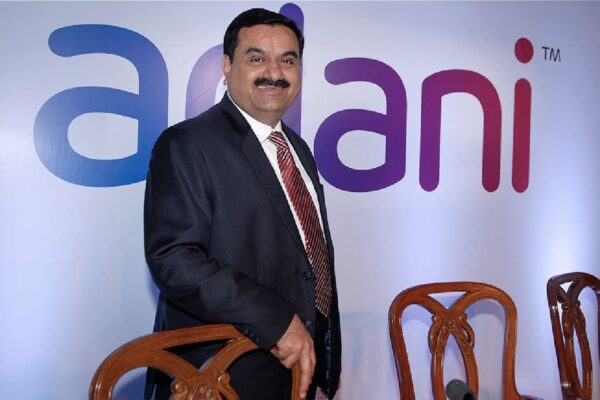
At the same time that the middle class was driven into poverty, the percentage of “ultra-rich” Indians climbed by 11%. According to research from March 2022, India is believed to have produced 70 new millionaires and 145 new billionaires between 2018 and 2022. 77% of the nation’s wealth is possessed by the wealthiest ten per cent of the population (Oxfam International).
Due to the group’s investments in capital-intensive industries, debt has been a major factor in its growth. The listed group companies’ total outstanding debt is projected to be $20 billion.
Concerns exist regarding whether some of the group companies’ valuations are approaching bubble territory.
The situation is considerably worse when it comes to wealth distribution. We are aware that the past few decades have seen an increase in wealth concentration on a global scale, with the top 1 per cent accounting for over 2/5 of all wealth growth. Between 1995 and 2001, the wealth of the top 52 billionaires—among them our own Mukesh Ambani and Gautam Adani—rose by about 10% annually.
Private wealth has increased more quickly and concentrated more sharply at the top in India. Less than 6% of the wealth belongs to the lowest 50% of people, more than a third belongs to the richest 1% and almost two-thirds to the richest 10%.
Another recent report on inequality from Oxfam makes the point that the pandemic was a particularly prosperous time for the extremely wealthy: the wealth of the top 10 richest men in the world doubled, while 99 per cent of people worldwide are in worse shape.
One of the biggest increases in wealth was that of Gautam Adani, whose wealth increased by eight times during the pandemic. According to Oxfam, he used his connections with the state to grow into the nation’s largest port operator and thermal coal power producer, controlling the market for what were once public goods like power transmission, gas distribution, and now privatized airports (Oxfam 2022).
Consider edible oils as an example, whose costs have increased at an unprecedented rate. Some people have generated enormous profits despite the suffering. According to a recent report, Gautam Adani’s business, Adani Wilmer, has seen a 46 per cent gain in income, driven mostly by the sale of edible oils, where it now holds a 20 per cent market share. Its profit before taxes increased by 40%.
The government’s generosity in allowing monopolies to develop in delicate areas of key commodities and then allowing prices to rise unchecked is another issue that affects how people live.
It is very unclear as to why there were 142 billionaires in India during the pandemic, and their wealth rose from Rs 23 lakh crore to Rs 53 lakh crore. At the same time, 4.6 crore people fell into extreme poverty as 84% of households saw a reduction in their income.
The “World Inequality Report 2022” and the homegrown PRICE Survey also came to a similar conclusion earlier: India was experiencing an unacceptable level of poverty and inequality. Most of our population lacks access to decent healthcare and education.
The coronavirus pandemic ruthlessly exposed the flaws in our public health system; it was discovered that practically all government hospitals had shockingly low staffing levels and inadequate facilities. Despite a record number of students receiving more than 90% on their board exams, the level of education provided by our institutions, with very few exceptions, is pathetic and sad.
According to the World Inequality Report, India experienced one of the fastest increases in private wealth to national income ever recorded: from 290 per cent in 1980 to 555 per cent in 2020.
India performs poorly on many measures of inequality as well. This novel estimate places women’s share of labour income at 18 per cent, which is roughly half the global average. Those who know how poorly India handles its unpaid and underpaid female workers—despite the country’s economy still immensely dependent on their labour—will not be surprised by this.
Why is India’s rank in the Global Hunger Index very low even after so many government efforts, but how is India’s richest billionaire, Adani, ranked 4th on the world’s billionaire list even after acquiring so much debt?
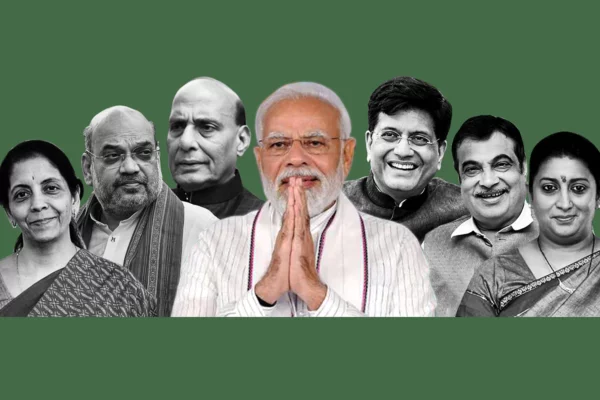
Shortly after RIL Chairman Mukesh Ambani was surpassed, coal mining tycoon Gautam Adani overtook him as Asia’s richest man. What is the reason for Adani’s success? What is the reason behind its success that even after the Indian economy has been going through a tough time in the past years, Adani has become so wealthiest person that the poor economic situation didn’t challenge or affect him?
He established a group of seven listed companies with a combined market capitalization of $153 billion in barely three decades.
With the exception of the Government highlighting sporadic successes to demonstrate how the country had advanced in the previous eight years, the current public discourse in India appears to be least concerned with economic challenges.
On the other hand, giant firms with deep pockets increased their loans at lower rates, fired employees, and reduced pay while citing the pandemic’s regulations, all while making massive profits. The Covid-19 pandemic had completely contradictory effects on the rich and poor, according to the Oxfam International study “Inequality Kills.” For instance, rising crude prices that caused domestic gasoline prices to spike resulted in windfall gains for oil refiners.
Indian billionaires expanded their wealth as millions of weak and vulnerable people fell into poverty as a result of the coronavirus.
What other factors contribute to the worsening of the economy despite the government’s efforts to curb poverty?
Declining Rate of Urban Employment: As businesses continue to lay off workers daily and the number of urban jobs declines, it is only natural that this impacts the number of paid jobs as well. While salaried employment in India fell by a staggering 6.8 million, the number of entrepreneurs fell by 3.5 million.
The Indian economy would be further burdened and weakened by employment losses. Taxing necessities like gasoline and diesel more would not end the government’s fiscal deficit problem, which has been getting worse over the past few years.
From an estimated 404 million jobs in 2019–20 to 396 million in March 2020, the average employment decreased. It decreased to 282 million in April (122 million estimated job losses).
Since it further reduces the purchasing power of the poor, food inflation significantly impacts their health and nutritional status. In the meantime, a 55 lakh tonnes reduction in supply in the public distribution system and a significant increase in retail prices were caused by the lack of wheat in India.
Far from being able to feed the world, the government was forced to make a hasty retreat, ban wheat exports, and force households to reduce their consumption of basic food.
The government combined several nutrition programs under the umbrella of “Mission Poshan 2.0” and dramatically cut the budget each year.
The government combined several nutrition programs under the umbrella of “Mission Poshan 2.0” and dramatically cut the budget each year.
Implementation fails in the absence of funding.
The government’s own National Family Health Survey data show a consistent malnutrition rate as a result.
Nobody seems to understand how to make sure that everyone in need benefits from the schemes.
Corrupt and inadequate distribution system
A weak and unprepared administration, insufficient social and physical infrastructure, and poverty all played a role in the decline of the Indian economy.
The struggle against hunger is dangerously off track.
According to the report, various threats to food security include escalating violence, weather extremes brought on by climate change, and the economic and health difficulties brought on by the COVID19 pandemic.
Due to the economy’s inability to keep up with our famed demographic dividend, there is a significant unemployment rate. The employment rate in India was only 35.8% in June 2022, according to data from the Centre for Monitoring the Indian Economy (CMIE), which means that only 35.8% of the country’s population of working age was employed.
With overall employment declining by 13 million to 390 million in June 2022, unemployment reached a peak of 7.8%.
The budgets of low-income households have been ruined by rampant inflation that has been above 7% for the last six months.
The trade gap increased significantly from $31.42 billion last year to $70.25 billion in the current year’s first quarter due to more expensive gasoline and higher gold imports.
The majority of government spending is financed by borrowing; as of 2021–2022, the government’s total debt climbed from Rs. 58.66 lakh crore to Rs. 139 lakh crore.
Point of view
The situation in India appears particularly grave as the Covid-19 outbreak has worsened the crisis of food and poverty. India dropped seven positions to rank 101 from 94 in the Global Hunger Index, which was issued last week.
The index assigns a score on a scale from 0 to 100, where 100 represents a “very alarming” condition. With a score of 27.5, India’s level of hunger is considered “severe.” India is currently behind its neighbours Pakistan (92), Bangladesh (76), and Nepal (76). (76).
Due to such entitlement failures in India, food poverty still represents a serious problem. We cannot ignore the bleak ground realities, even though the government has rejected the Global Hunger Index’s findings as “unscientific.”
It makes sense that India stands out as a poor, extremely unequal country with a wealthy elite in the World Inequality Report. Unfortunately, history teaches us that these nations rarely make significant progress. Thus, any true development requires a radical reorganization of policies.
It appears that there is a lack of a coherent strategy for addressing economic and social issues.
India is a poor country with a wealthy elite that is going nowhere.
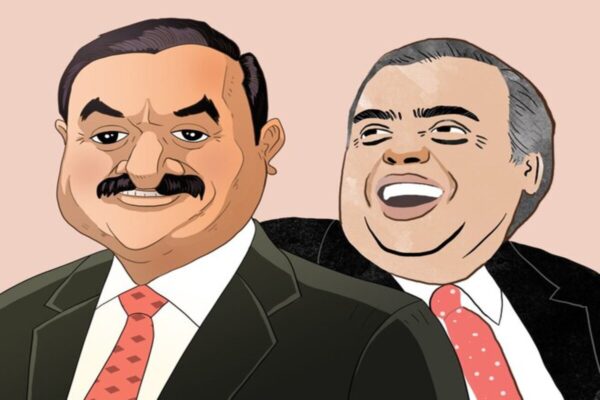
Disruptions brought on by the pandemic have plunged India’s real economy, which was already in the worst condition in decades, into a grave crisis and taken hundreds of millions of lives or severely restricted them. But it had flourished the billionaires like Adani who were not impacted by such situations.
Rather, he achieved 4th rank in the world billionaires list. Despite acquiring so much of debts and loans from various banks, still, Adani group is on the path of expanding its industries and sectors. We are still trying to understand and decode this concept.
On the other side, the government has many programs for poverty reduction; however, they are not well implemented. As a result, the needy person does not receive the benefit.
Urgent policy intervention is urgently required to free the poor from hunger and poverty. Keynes stated that in times of crisis, the government must solve the problem by immediate intervention rather than “waiting for an invisible hand to fix the problem” because, to put it succinctly, “in the long run, we are all dead.” Therefore, there is a great need to revamp the current policy in accordance with current requirements.
Extremely wealthy and powerful people benefit financially from pain and suffering. This is morally unacceptable. Some people have gotten rich by denying vaccines to billions of people, while others have done so by taking advantage of rising food and energy prices. Massive bonuses and payouts are being paid out while they pay the least amount of tax possible.
The increasing wealth and poverty are evidence that our economic system is operating just as the wealthy and powerful intended. These two trends are two sides of the same coin.
edited and proofread by nikita sharma




